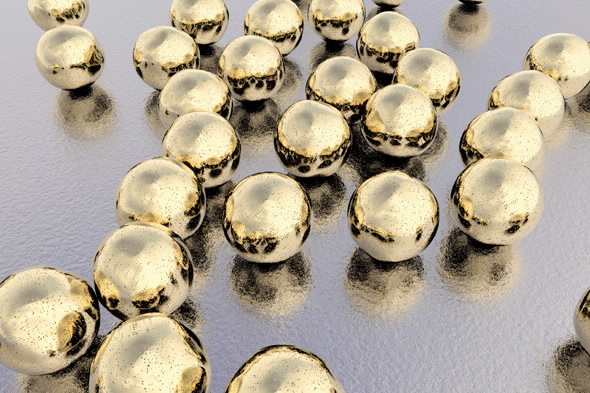
Neutron scattering at ANSTO has provided more detailed information about the interface and structure of the stabilising ligand layer of gold nanoparticles. The information is important for understanding measurements obtained using routine particle sizing techniques.
A collaboration between The National Measurement Institute (NMI), UNSW and ANSTO recently evaluated six different measurement techniques, including small angle neutron scattering (SANS) on the BILBY instrument, to quantify the thickness of surface stabilising layers around nanoparticles.
Such layers may be intentionally applied to provide stabilisation or other functionality in a product, or may be passively attached to a particle as it enters different chemical environments (such as the human body or a river system).
Characterisation using multiple techniques was necessary as currently there is no single method that is able to simultaneously provide information on the size of both the particle core and its stabilising layer.
The study was the honours research project of Timothy Zurrer, who wanted to probe the structure of gold nanoparticles stabilised with polymers.
The research was supervised by Dr Stuart Prescott of UNSW and Dr Åsa Jämting and Dr Victoria Coleman of the NMI.
“Robust and reliable metrology should correctly account for particle size and shape distribution, and for the influence of any surface coatings that are present,” said Jämting.
“The study evaluated and combined the results from six different techniques because the reported average particle size and particle size distribution are known to be heavily influenced by the choice of instrument technique,” said Prescott.
In addition to neutron scattering, the study used dynamic light scattering, particle tracking analysis, differential centrifugation sedimentation, transmission electron microscopy and resonant mass measurement to characterise particle size and shape distribution.
The study focused on gold nanoparticles with a narrow size distribution, which were stabilised in a colloidal solution by either citrate ions or poly(vinyl pyrrolidone). Zurrer used nominally 40 and 60 nanometre particles that were commercially purchased in the study.
Gold nanoparticles are ideal candidates for reference materials because of their industrial significance, stability and ease of use.
“In situ SANS measurements of suspended particles in solution provided insight into how the structure is stabilised by the ligands in the capping layer which surrounds the metal core and allows us to experimentally quantify the thickness of the capping layer,” said Dr Kathleen Wood, who assisted with data collection on BILBY at the Australian Centre for Neutron Scattering along with Dr Andrew Whitten.
“Varying the scattering length density of the samples enables you to investigate different regions within the sample,” said Wood.
This technique allows you to use contrast variation to see both the corona and the core.
Contrast variation relies on the unique interaction of neutrons with hydrogen and its isotope deuterium.
“An adsorbed ligand layer model fit the instrument data better than a homogenous step change in density distribution,” said Wood.
The results suggested that the distribution of mass in particles capped with polymers is not homogenous.
The layers in the cap, which are comprised of trains, loops and tails, become more dense towards the particle surface.
“The poly(vinyl pyrrolidone) cap on the particles is extremely small and challenging but we were able to measure thickness successfully,” said Wood.
The adsorbed citrate ligand layer, which is even thinner than the poly(vinyl pyrrolidone) is largely invisible.
Hydrodynamic measurements based on Brownian motion indicated the choice of stabilisation system influences measurement of apparent particle size, which called for a more thorough investigation of the stabilising layer itself.
“Analysis of the SANS data provided a unique insight into the structural conformation of ligands stabilising the gold nanoparticles,” said Wood.
Published: 30/01/2018


